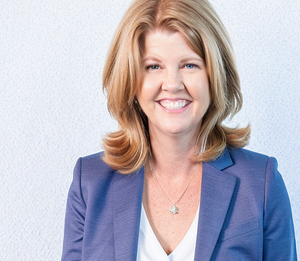I am pretty passionate about developing the skillset for a good product update. I consider it to be basic literacy for any manager or project manager. It takes knowing your project really well + about five minutes of prep work. And what it does is allow people to understand the true status – and risks – of the project without swimming in details.
The Document:
Next Up:
I suggest watching this video next:

The Transcript:
We are spending some time learning how to build a good project update. And I am pretty passionate about developing the skillset for a good product update. And I consider it basic literacy for any manager or project manager, basically anyone who is operating at the champion level or higher in your org chart needs to develop this skillset. And what it is,
is the ability to give a glimpse into the progress of a project that they're responsible for with analysis synthesis and enough detail for a manager to feel confident that it's being handled well and to surface any issues. And so that's a it's, it sounds both basic and elevated and it, and it is it's takes a little bit of prep work, maybe five minutes of prep work.
It takes knowing your project really well. It takes about five minutes of prep work. And then what it does is allows people to understand the breadth and the status of the project without swimming in details. So let's talk about when and why we would use this. It's frequently used at the beginning of meetings. So the meeting manager can get the lay of the land,
sort of all stations report in so that the meeting manager knows what's up and then can have a, you know, a full understanding of how to prioritize any of the issues that are getting surfaced and drops down so they can prioritize appropriately. It's also handy when you're speaking to anyone at your peer level or higher in the org chart, when they say, Hey,
what's up with your project, how's it going? You can, you can use this technique to give them a glimpse. Cause because what they're trying to figure out again is, are you on track? Does it sound like you have everything well in hand, but without swimming in the details, it's also a fantastic practice to use on your own, which I do at the end of every week.
I walk through each of my clients and do this sort of project update with each of my clients as a project, because I want to get my head around. Where are we? Are we on track? Did any issues come up? What am I facing for the coming week? And just sort of, it, it gives me peace of mind that I've thought through every plate that's supposed to be spinning on my dashboard.
And then I, so nothing's going to surprise me. So it's like just a quick mental inventory. So once you get in the habit of doing this, it will be, it will become a little bit second nature, and you will find that not just your meetings are better run, but your projects are better run because people are thinking almost holistically about the entire project where they are and whether they're on track or not.
So the best practices here talk about basically I'm harping on a proper detail level first, which is forest, not trees. And also the fact that this is a little bit of synthesis and analysis. This isn't simply like you could have looked in a sauna and saw the things that I checked off last week. And you can see the things that have the due date for next week.
Like that's not what we're reporting here. We're actually trying to digest it a little bit to give it a green, yellow, red status to it, and then surface any issues because we're all, you know, championed levels are higher so we can see around the corners of it and we can anticipate problems. So that's what the best practices are talking, talking through.
And then when you get to five here and it says, shoot for eight to 10 sentences, two minutes or less to say, this really is just trying to give you a flavor of like this. Isn't a paint by numbers, but what I'm trying to say is be brief, be concise. And it really doesn't go on for five to 10 minutes.
It really is two minutes or less. So if you find yourself going longer, you're probably not doing it right. Tighten it in the other thing I want to emphasize here, it takes preparation and should not be winged. So when folks show up, let's say you're hosting a meeting and folks are showing up and you're trying to do the round Robin and you get this big breath in and you say,
well, let's see. So then you want to stop right there because that person did not prepare that person is trying to do a quick mental review of the last week. So they can say something intelligent about it. That's something to coach on. I really want folks to show up to meetings where project updates are expected with a concise project update for that moment.
And again, I do consider it basic literacy for managers and PM's to, to stop put a pin in something and take full stock of the project and where they are. That is a skill set. You absolutely want to develop and keep strengthening because that's going to get better results for you. So the formula, which I'm not going to go through bit by bit,
because you don't need to see me read, but I'm going to go through the top line stuff. So first of all, we want to orient to where we are right now, either we're in a critical moment or we're not. And it's basically just, that's what you want to express. Give a couple sentences on the last week. And again, we're focusing on whether we're on track or not.
We're focusing on whether any critical milestones got checked off and put the bed or got blown. And that's it. Then we want to look ahead, give to a couple sentences on the upcoming week. Is there anything critical on the critical path about it? Is there any milestones that we're anticipating sort of orient us to where what's coming down the pike and then announce any decisions or issues that you need to drop down.
So dropping down means you're surfacing them as a roadblock and you need some help either. You need your help or your peers, or you need the help of manager or to break that down and, or you just want to flag it because it's so serious. So again, I just want to go through these, these lists right here, do not bullet points and no half sentences.
Really what I'm trying to get us away from is the fact that I just don't want lists, lists, make the other person do the work. And I want the project manager, the person doing the update to do the work and tell us what's important, or whether something's not important when you focus on details. What you're really trying to suss out is what does that mean for the project?
So the meat, the reason that you're mentioning a detail is because it has some sort of implication, a consequence. And so tell us what that is. We definitely need to know in that update, whether It's on track, whether it's new or whether it's going off the rails, that should be explicit. The more that it's more of these two, it needs to be very explicit that you think something on the critical path is in jeopardy of slipping. And again, clearly articulate if you need something to keep it on track, you need to clearly articulate it. So that is a project update.








Member discussion